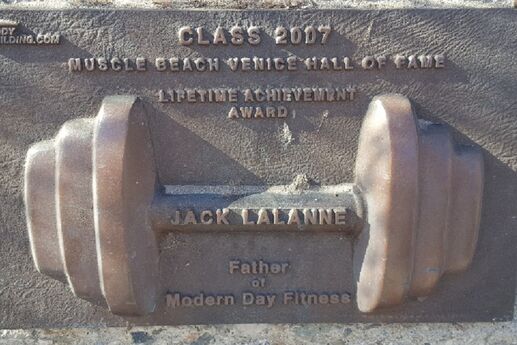From Frat Brothers to Fat Brothers
If staying lean is a struggle, you just might be hanging out with the wrong crowd. Here’s how to stop your friends from making you fat.
Your friends. If you didn’t know they loved you, you’d think they were trying to kill you: convincing you to go streaking during a blizzard, throwing that wild pitch right at your noggin, secretly spicing your chili with jalapenos.
But there’s something else they might be doing to harm you, and neither they nor you may even know it.
They could be making you fat.
Yes, your bros may influence your weight and the behaviors that tend to make you overweight. In a study published in the August issue of the American Journal of Clinical Nutrition, youngsters age 9 to 15 were paired up with either a friend or an unfamiliar person of similar age. Friends who ate together consumed more food than those paired with someone they didn't know. Friends were also more likely to eat similar amounts than participants paired with a stranger. The results, researchers said, suggest that friends may act as “permission givers” when it comes to overeating.
“It’s the same as smoking,” says exercise psychologist Thomas Collingwood, who holds a doctorate in psychology and works at Fitness Intervention Technologies in Richardson, Texas. “If your buddies smoke, you tend to smoke. The issue is peer pressure -- and we’ve known for a long time that this has a powerful, powerful effect on all kinds of behaviors.”
Does this mean you need to shed friends to shed pounds? Not necessarily. You can fight the weighty influence of your crew while actually helping them get leaner, fitter and healthier. The ways:
1. Know when you’re at risk and plan ahead.
Beware the dangers of being packed into a booth down at the local TGIF with your posse on a Saturday night. “The dinner table or the bar is probably the worst for guys,” says weight loss expert Kara Mohr, who holds a doctorate in exercise physiology and is the co-owner of Mohr Results Inc. “It’s a ‘man out’ thing -- who can drink the most, eat the most, enjoy the most.”
Recognizing these high-risk social eating situations in advance will enable you to plan ahead. For instance, consider pulling up the menu of the restaurant you’re headed to in advance so you can find the healthy alternatives there -- or maybe even decide you don’t want to go to this place at all! “Once you’re at the buffet at happy hour, it’s probably too late,” adds Mohr.
2. Take one step at a time.
“You don’t have to say ‘I’m going to stop hanging around with my friends, go the gym every night and eat celery sticks from now on,’” says Mohr. Instead, start by skipping the wings at happy hour. Or decide not to drink on weeknights. Or choose the menu’s healthy alternatives. “You still have choices, even if you’re hanging with the same friends,” says Janice Baker, a registered dietitian based in San Diego, Calif. “Instead of five beers, maybe it’s two beers with water in between. Instead of a double cheeseburger and 64-ounce soda, maybe it’s a regular burger with an iced tea.”
3. Put your money where your mouth isn’t.
No need to make an announcement about your new exercise or eating program. Just go ahead and do it. “You don’t have to talk about dieting; just set an example and enjoy your friends,” says Baker. “They might catch on and start asking about what you’re doing to be in such good shape.”
4. Be the game changer.
Perhaps the group could use a shake-up. While watching football on TV, “maybe you take the initiative to say, ‘Hey guys, at halftime, let’s go shoot some hoops instead of sitting around,’” recommends Collingwood. “Or ‘This week, how about we meet at the gym before we go out?’”
5. Work together.
Psychologists often use a “behavior contract,” a written agreement that you and a buddy could sign, to help people make changes. Example: You and your pal can pledge to do a 30-minute circuit workout at the gym together twice a week for the next month. You set a nonfood reward for compliance (e.g., after the month of workouts, you’ll treat yourselves to tickets to a ball game) and a punishment for failure (e.g., you’ll both do the dishes for your respective girlfriends for a week). If one sticks with reaching the goal and the other doesn’t, the non-sticker buys the tix.
Collingwood, who has helped develop fitness programs for everyone from middle schoolers to veteran police officers, says he’s found a 60 percent success rate with those who use a behavior contract. “They’re successful if they’re kept simple and doable,” he says.
6. Make a clean break.
If your playmates refuse to buy into any of this, maybe it is time to move on -- or at least see them a little less or under different circumstances. Instead, you can make some new friends (at the gym, the park -- heck, maybe even Subway!) who want to lift weights and play ball, and whose idea of fun extends beyond seeing how many plates of nachos and cheese they can scarf down. Says Mohr: “It can’t hurt to find new friends that model the behaviors you want to adopt.”






